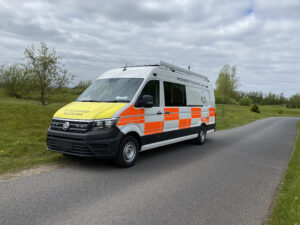People once believed that flying cars and hover cars were the future. Perhaps, some people still do. And perhaps, they indeed are. But for now, the future technologies that will change driving forever are a little more grounded. They are technologies that improve safety and the driver’s user experience. As a result, they are less exciting than a jet-powered Ferrari, but they are at the very least almost tangible.
Today, we’ll be taking a look at the very near future of car technologies – and how, if at all, they will benefit fleet operators. Read on to find out more.
1. V2V Vehicle-to-Vehicle Communication Systems
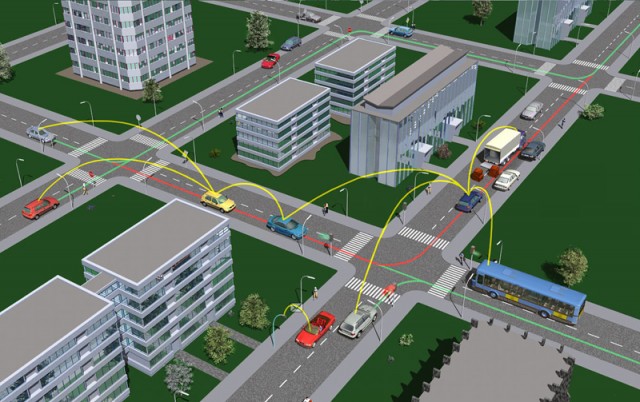
Image source: Car 2 Car
Vehicle-to-Vehicle Communication (V2V) is all about safety. Cars are wired up with a system that constantly broadcasts information about where the car is, how fast the car is going, what direction the car is facing, the car’s yaw, and the concept is that by transmitting that information to other cars, a car equipped with V2V can stay safer by knowing where the other car is and what it’s up to.
A number of car manufacturers, including Ford and Nissan, have already shown off their systems which use a WiFi-like network. Of course, V2V is not only limited to cars. Vans, Lorries, motorbikes and anything else with a battery can benefit from the system. And if analysts are to be believed, these systems will go way beyond alerts – they will actively avoid accidents in the near future… and tailgaters will become a thing of the past.
Here’s a scenario of V2V in action: You are overtaking on the motorway. A lot of cars nowadays have parking sensors, which alert you when there is something in your blind spot, but these are limited in their range and they do not work at speed. When you have cars transmitting data to one another, range and speed is less of an issue, and a V2V system could effectively alert the driver of the danger, thus avoiding an accident.
How it’ll benefit fleet operators: V2V will increase the safety of fleet drivers and reduce the number of accidents and/or vehicle insurance claims considerably, thus lowering premiums and saving money. It’s also very likely that V2V equipped vehicles will receive an immediate discount from insurers.
2. Self-driving cars
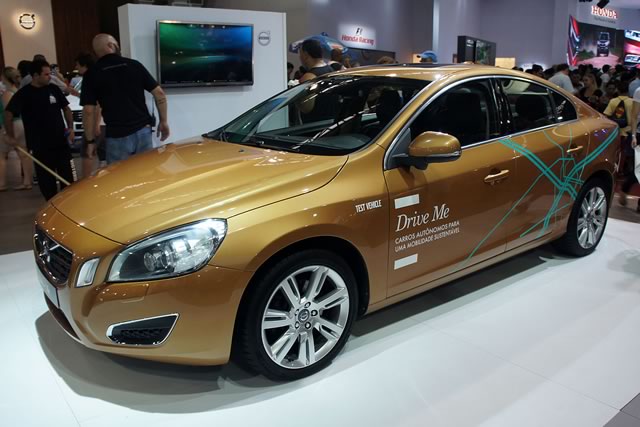
Image source:”Drive Me Volvo S60 SAO 2014 0256” by Mariordo (Mario Roberto Duran Ortiz) – Own work. Licensed under CC BY-SA 4.0 via Wikimedia Commons.
Self-driving cars may appear to be as far-fetched as flying cars and hover cars, but they really aren’t. Cars that can drive themselves have been around for a few years now and the British Government is interested enough to have launched a review of the technology, with a view to becoming a world leader in driverless technology. They have found that our existing legal and regulatory framework is not a barrier to the testing of automated vehicles on public roads, which gives manufacturers lee-way to test their creations out.
Google’s self-driving car project is the most well-known example of a driverless car, but this is a rather ugly machine and the technology is clearly visible. Audi did a better job at showing the world what a driverless car would look like with its A7 Sportback, which used cameras, lasers and radar to travel at speeds of up to 70mph on a 550 mile trip to Las Vegas.
The case for self-driving cars is simple – they make driving easier, offer greater mobility to a wider range of people, reduce emissions, ease congestion and improve road safety. The case against self-driving cars is also simple – the technology will be too expensive for normal people to take advantage of, not everybody will like the idea of being driven by a machine, and therefore adoption may be slow, killing the market, and a lot of people are concerned about an autonomous vehicle’s ability to collect personal data and protect itself from hacks.
How it could benefit fleet operators: Fleet drivers can be more productive in-between journeys, completing work that would otherwise be done after driving.
3. Biometric vehicle access

James Bond fans, eat your heart out – accessing a vehicle by fingerprint, retinal scan and voice recognition may become a thing in the near future, because Ford has been granted a patent for a biometric device that enables just that. The patent was applied for in 2012 and it has now been approved, and will allow Ford to test and launch a security system that uses a smartphone or other personal device to connect to a car’s controller over Bluetooth or WiFi, allowing the user to perform basic functions like unlocking certain doors, and complex functions like authorising another person to access the vehicle and setting certain functions of the car such as a speed limit for a family member plus much more.
How it could benefit fleet operators: Vehicle theft will become a thing of the past and fleet managers will be able to remotely control the security of their vehicles.
4. eCall

Image source: European Commission
Have you ever seen those orange SOS telephones dotted along the hard shoulder of motorways? Well, they may soon become a thing of the past because the European Commission has announced that from April 2018 all new vehicles must be fitted with a technology called ‘eCall’, which is a device with the ability to call the emergency services in the event of a serious accident. The way it works is that in the case of a crash, sensors will detect the collision and the system will automatically call the nearest emergency centre for help. The system will open a line between the occupant and the emergency centre, but if there is no response, the emergency centre will still have basic details about the collision and help will be sent accordingly. It is hoped that the system will save countless lives.
How it could benefit fleet operators: eCall offers fleet operators reassurance that drivers have a means of getting help if they are involved in a serious accident, even if they have no phone.
5. Laser-powered headlights
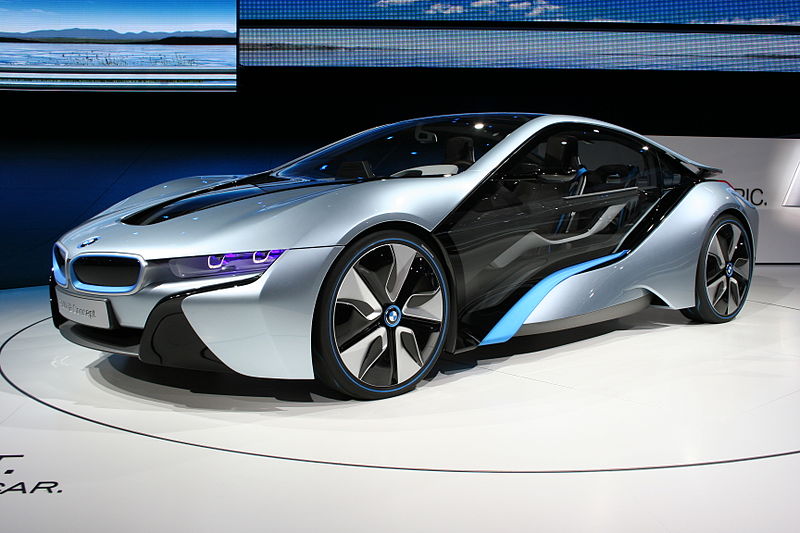
Image source: Wikipedia by Abehn. Own work, licensed under CC BY-SA 3.0
Full LED headlights are already available on the likes of the Seat Leon, but laser headlights are a significant leap forward from these. They are available in the BMW i8 right now at the staggering cost of £7,995 as an optional extra and BMW claims that they are 1,000 times brighter than normal LED headlights with significant visibility improvements.
They aren’t dangerous, either. The lasers are filtered through the headlamp onto the road ahead. But they are bright. So bright, in fact, that BMW’s version will only activate at speeds above 37mph, because even they concede that they’re too bright for urban driving. Audi has gotten in on the action too with their Audi Laserlight Concept – but this isn’t available on any production cars just yet. So for now, the BMW i8 is the Ultimate Headlight Machine.
How could benefit fleet operators: It won’t benefit fleet operators directly, but it will offer fleet drivers extra visibility on the motorway and improve safety.
6. Traffic Light Assist
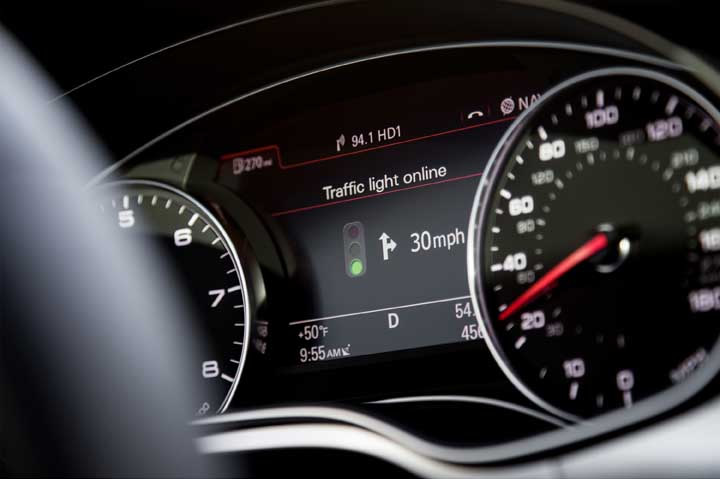
Image source: Audi | Copyright: Audi
Traffic lights are a pet hate of many drivers – even if they are an essential part of our road’s infrastructure. Audi wants to change that with Traffic Light Assist, a driver assistance technology that uses local data sources to predict when traffic lights are going to change.
It does this via on-board WiFi that’s connected to traffic light network servers’ close by. In practice, the system works very well, with a traffic light icon in the central display along with a countdown timer that reads the number of seconds until the lights will change. By doing so, the driver of the vehicle is able to adjust their speed to pass through the light without having to stop beforehand. And interestingly, the system is hooked up to Audi’s start/stop systems, and this means that the engine will fire into life a few seconds before a traffic light turns green to ease congestion. Nice.
The technology will be rolled out to all Audi models in the future and Audi reckons it can achieve a 15 percent reduction in CO2 emissions.
How could benefit fleet operators: We can see Traffic Light Assist making journeys shorter and reducing the risk of drivers running a red light. But the biggest benefit of this technology is the fuel saving potential – a 15 percent reduction in fleet emissions is not to be sniffed at.
7. Augmented reality dashboards
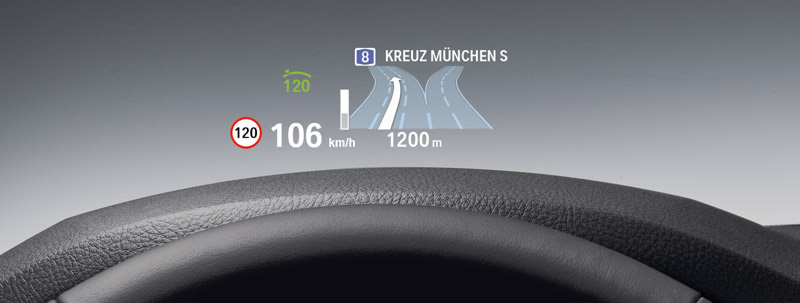
Image source: BMW | Copyright: BMW
Not to be confused with head-up displays (which project relevant driver information directly into the driver’s line of site, such as BMW’s Head-Up Display which can display speed and satellite navigation instructions), augmented reality dashboards go one step further by also displaying information about the objects in front of a vehicle, such as the distance of a pedestrian or the speed of a cyclist, to improve safety and the driver’s awareness.
This technology is already there, but there are no cars on the market right now that offer such an advanced augmented reality dashboard – especially one that’s also fully controllable by touch and one where passengers are able to zoom in on objects for a vivid image of the road ahead. It is thought that such systems will be available in the near future, though, and for us this is the most exciting future car technology listed here today, because not only will it improve safety, but it will also take the driver’s relationship with their surroundings to a whole new level – no longer will people be trapped inside a metal and glass bubble.
How it could benefit fleet operators: Augmented reality dashboards will offer everything that head-up displays offer (such as driving data including fuel consumption and speed and satellite navigation instructions), but they will also provide data about objects outside the vehicle to improve safety and awareness. For fleet operators, this is an incredible technology, because it will reduce the risk of their drivers having accidents considerably.
8. Compass4D
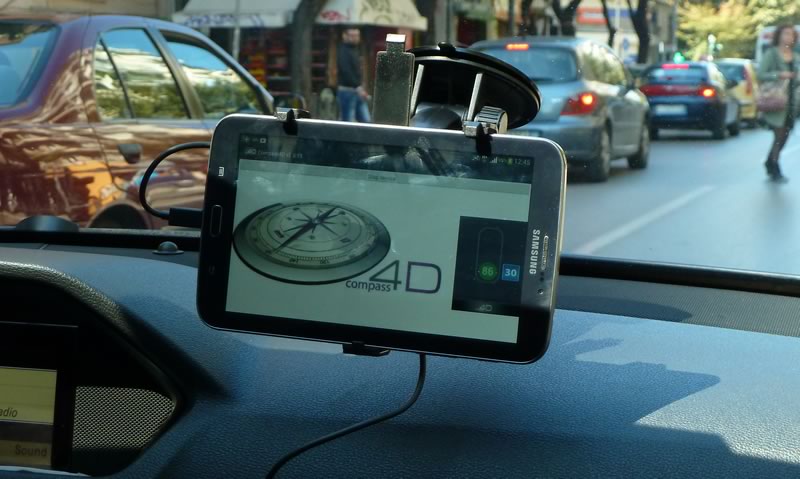
Images source: Compass4D
Compass4D is a traffic control system that’s designed to reduce congestion, improve safety and reduce the level of CO2 emissions vehicles produce while at the traffic lights. It works in conjunction with another technology listed here today, V2V communication, or more specifically in this application Cooperative Intelligent Transport Systems (C-ITS) made possible by short range communication (ETSI G5) and cellular networks (3G/4G LTE).
This is a 3-year European project that’s being developed with 7 European cities (Bordeaux, Copenhagen, Helmond, Newcastle, Thessaloniki, Verona and Vigo). Compass4D has three main services that are being trialled to test their effectiveness in these cities:
- The Red Light Violation Warning (RLVW)
RLVW sends informational messages to the driver of a vehicle to alert them of upcoming traffic light intersections, to increase the driver’s awareness. The thought behind this system is that by warning a driver that they are approaching a red light, the possibility of a red light being ignored is far less likely, thus reducing the number of collisions.
How it could benefit fleet operators: Running a red light can lead to points on a license, dangerous situations and poor public perception – none of which is good for a fleet operator. RLVW will warn fleet drivers about upcoming traffic lights so that the chances of running a red light are greatly reduced.
- The Road Hazard Warning (RHW)
RHW sends warning messages to the driver when they are approaching a hazard. A hazard in this case could be obstacles in the road. For example, the system will send the driver a message if there is queuing traffic after a blind spot. Or it might send the driver a message if there has been a crash up ahead on the motorway.
How it could benefit fleet operators: Accidents can be unavoidable – but the chances of an accident occurring are greatly minimised if the driver of a vehicle is given a warning beforehand. For fleet operators, RHW offers this and this means that drivers of fleet vehicles will be far less likely to be involved in an accident. This will reduce downtime and save thousands of pounds in the process.
- The Energy Efficient Intersection (EEI)
While RLVW and RHW are safety-focused, EEI is environment-focused. This system will give certain vehicles priority when approaching traffic light intersections, turning the lights to green to allow them through. Priority vehicles include emergency vehicles, public transport vehicles and heavy goods vehicles. The thought behind this system is that by avoiding stops and delays with the most inefficient vehicles a city’s CO2 emissions can be reduced.
How it could benefit fleet operators: Fleet operators with heavy goods vehicles will see their vehicles given priority access at traffic light intersections. This will reduce the amount of fuel used when pulling away and getting up to speed, and it will also reduce the driver’s journey time. This in turn will improve fleet emissions
Share
Leave a Reply



